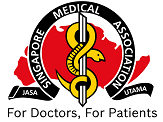Souza CS, Resende FS, Rodrigues MP
Correspondence: Prof Dr Marcelo Palmeira Rodrigues, pmarcelo27@gmail.com
ABSTRACT
INTRODUCTION Acute pulmonary embolism (APE) is an urgent clinical condition that can progress in a wide variety of ways. Therefore, we sought to develop an easy-to-apply algorithm, to be based on readily available clinical indicators, effective in predicting unfavourable outcomes.
METHODS This was a retrospective cohort study based on systematically collected data in a database. The study included 102 patients with APE who were admitted to a tertiary care hospital. The following outcomes were defined as unfavourable: shock, the need for mechanical ventilation, the use of thrombolytics, and death. Logistic regression analysis was used to explore variables significantly associated with outcome and to calculate post-test probabilities.
RESULTS The prevalence of unfavourable outcomes was 25.5% (26 of the 102 patients with APE). The risk of an unfavourable outcome was reduced to 7.0% for patients with APE who were aged ≤ 40 years. In patients with APE who were aged > 40 years, the presence of hypoxaemia (i.e. peripheral oxygen saturation < 90%) alone increased the risk of an unfavourable outcome to 57.0%. A recent history of trauma and the presence of pre-existing lung or heart disease were significantly associated with unfavourable outcomes. The inclusion of those variables in the logistic regression model increased the post-test risk of an unfavourable outcome to 65.0%–86.0%.
CONCLUSION Advanced age (i.e. > 40 years), the presence of hypoxaemia, a recent history of trauma and the presence of pre-existing lung or heart disease are risk factors for unfavourable outcome in patients with APE.
Keywords: anoxia, logistic models, prognosis, pulmonary embolism, wounds and injuries
Singapore Med J 2014; 55(9): 483-487; http://dx.doi.org/10.11622/smedj.2014118
REFERENCES
| 1. Stein PD, Kayali F, Olson RE. Estimated case fatality rate of pulmonary embolism, 1979 to 1998. Am J Cardiol 2004; 93:1197-9. http://dx.doi.org/10.1016/j.amjcard.2004.01.058 |
||||
| 2. van der Bijl N, Klok FA, Huisman MV, et al. Measurement of right and left ventricular function by ECG-synchronized CT scanning in patients with acute pulmonary embolism: usefulness for predicting short-term outcome. Chest 2011; 140:1008-15. http://dx.doi.org/10.1378/chest.10-3174 |
||||
| 3. Kukla P, D?ugopolski R, Krupa E, et al. Electrocardiography and prognosis of patients with acute pulmonary embolism. Cardiol J 2011; 18:648-53. http://dx.doi.org/10.5603/CJ.2011.0028 |
||||
| 4. Sanchez O, Trinquart L, Caille V, et al. Prognostic factors for pulmonary embolism: the prep study, a prospective multicenter cohort study. Am J Respir Crit Care Med 2010; 181:168-73. http://dx.doi.org/10.1164/rccm.200906-0970OC |
||||
| 5. Ozsu S, Karaman K, Mentese A, et al. Combined risk stratification with computerized tomography /echocardiography and biomarkers in patients with normotensive pulmonary embolism. Thromb Res 2010; 126:486-92. http://dx.doi.org/10.1016/j.thromres.2010.08.021 |
||||
| 6. Vuilleumier N, Le Gal G, Verschuren F, et al. Cardiac biomarkers for risk stratification in non-massive pulmonary embolism: a multicenter prospective study. J Thromb Haemost 2009; 7:391-8. http://dx.doi.org/10.1111/j.1538-7836.2008.03260.x |
||||
| 7. Kjaergaard J, Schaadt BK, Lund JO, Hassager C. Prognostic importance of quantitative echocardiographic evaluation in patients suspected of first non-massive pulmonary embolism. Eur J Echocardiogr 2009; 10:89-95. http://dx.doi.org/10.1093/ejechocard/jen169 |
||||
| 8. Aujesky D, Obrosky DS, Stone RA, et al. Derivation and validation of a prognostic model for pulmonary embolism. Am J Respir Crit Care Med 2005; 172:1041-6. http://dx.doi.org/10.1164/rccm.200506-862OC |
||||
| 9. Jiménez D, Aujesky D, Moores L, et al. Simplification of the pulmonary embolism severity index for prognostication in patients with acute symptomatic pulmonary embolism. Arch Intern Med 2010; 170:1383-9. http://dx.doi.org/10.1001/archinternmed.2010.199 |
||||
| 10. Goldhaber SZ, Visani L, De Rosa M. Acute pulmonary embolism: clinical outcomes in the International Cooperative Pulmonary Embolism Registry (ICOPER). Lancet 1999; 353:1386-9. http://dx.doi.org/10.1016/S0140-6736(98)07534-5 |
||||
| 11. Aujesky D, Obrosky DS, Stone RA, et al. A prediction rule to identify low-risk patients with pulmonary embolism. Arch Intern Med 2006; 166:169?75. http://dx.doi.org/10.1001/archinte.166.2.169 |
||||
| 12. Volschan A, Albuquerque D, Tura BR, et al. Predictors of hospital mortality in hemodynamically stable patients with pulmonary embolism. Arq Bras Cardiol 2009; 93:135-40. PMid:19838490 |
||||
| 13. Manier G, Castaing Y. Influence of cardiac output on oxygen exchange in acute pulmonary embolism. Am Rev Respir Dis 1992; 145:130-6. http://dx.doi.org/10.1164/ajrccm/145.1.130 |
||||
| 14. Manier G, Castaing Y. Contribution of multiple inert gas elimination technique to pulmonary medicine--4. Gas exchange abnormalities in pulmonary vascular and cardiac disease. Thorax 1994; 49:1169-74. http://dx.doi.org/10.1136/thx.49.11.1169 |
||||
| 15. Wicki J, Perrier A, Perneger TV, Bounameaux H, Junod AF. Predicting adverse outcome in patients with acute pulmonary embolism: a risk score. Thromb Haemost 2000; 84:548-52. PMid:11057848 |
||||
| 16. Kucher N, Rossi E, De Rosa M, Goldhaber SZ. Massive pulmonary embolism. Circulation 2006; 113:577-82. http://dx.doi.org/10.1161/CIRCULATIONAHA.105.592592 |
||||
| 17. Uresandi F, Otero R, Cayuela A, et al. [A clinical prediction rule for identifying short-term risk of adverse events in patients with pulmonary thromboembolism]. Arch Bronconeumol 2007; 43:617-22. Spanish. PMid:17983546 |
||||
| 18. Carson JL, Kelley MA, Duff A, et al. The clinical course of pulmonary embolism. N Engl J Med 1992; 326:1240-5. http://dx.doi.org/10.1056/NEJM199205073261902 |
||||
| 19. Sam A, Sánchez D, Gómez V, et al. The shock index and the simplified PESI for identification of low-risk patients with acute pulmonary embolism. Eur Respir J 2011; 37:762-6. http://dx.doi.org/10.1183/09031936.00070110 |
||||
| 20. Laporte S, Mismetti P, Décousus H, et al. Clinical predictors for fatal pulmonary embolism in 15,520 patients with venous thromboembolism: findings from the Registro Informatizado de la Enfermedad TromboEmbolica venosa (RIETE) Registry. Circulation 2008; 117:1711-6. http://dx.doi.org/10.1161/CIRCULATIONAHA.107.726232 |
||||
| 21. Conget F, Otero R, Jiménez D, et al. Short-term clinical outcome after acute symptomatic pulmonary embolism. Thromb Haemost 2008; 100:937-42. PMid:18989541 |
||||


